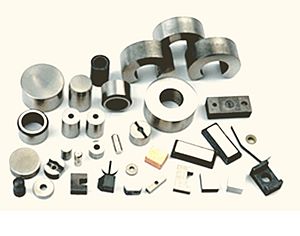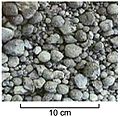Sintering facts for kids
Sintering is a clever way to make strong, solid objects from tiny bits of powder. Imagine you have a pile of sand, but you want to turn it into a solid brick without melting it completely. Sintering does something similar! It heats the powder just enough so the tiny particles stick together, forming one strong piece. This process is used to create many different things we use every day.
Contents
What is Sintering?
Sintering is a manufacturing process that turns powdered materials into a solid, strong object. It's like baking a cake, but instead of flour, you use metal, ceramic, or plastic powders. The heat makes the powder particles bond together. This happens without melting the material all the way.
How Does Sintering Work?
First, the powder is shaped into the object you want to make. This can be done by pressing it into a mold. Then, this shaped powder is put into a special oven, called a furnace. The furnace heats the powder to a very high temperature. This temperature is below the material's melting point.
As the powder gets hot, the tiny particles start to join up. They form connections with each other. Think of it like tiny magnets pulling together and sticking. This bonding makes the loose powder turn into a single, solid object. The object becomes much stronger and denser than the original powder.
Why Do We Use Sintering?
Sintering is very useful for several reasons. It allows us to make objects with very complex shapes. It's also great for materials that are hard to melt. Some materials need extremely high temperatures to melt. Sintering lets us work with them at lower, but still very hot, temperatures.
This process also helps create objects with specific properties. For example, you can make parts that are very strong. You can also make parts that can handle high heat. Sintering can even create objects with tiny holes inside them. These holes are useful for filters or special batteries.
What Can Be Made with Sintering?
Many different products are made using sintering. Here are a few examples:
- Metal parts: Gears for cars, tools, and parts for machines are often sintered. This makes them very durable.
- Ceramic parts: Spark plugs for engines and special tiles are made this way. Ceramics are known for resisting heat.
- Filters: Sintered materials can have tiny, controlled pores. This makes them perfect for filtering liquids or gases.
- Dental fillings: Some modern dental materials are created using sintering. This ensures they are strong and long-lasting.
- Magnets: Many strong magnets are produced through sintering. This process helps arrange their particles correctly.
Sintering is a key process in many industries. It helps create advanced materials for technology.
Images for kids
See also
 In Spanish: Sinterización para niños
In Spanish: Sinterización para niños





